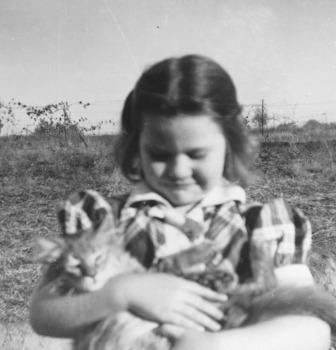
A short history of the cat controversy
Recently there have been a lot of stories on the Internet about efforts to eliminate domestic cats. Feral cat communities are especially maligned. In New Zealand, for instance, there is a huge battle brewing. One side is financed by a businessman who believes that all cats should be exterminated from the island country. His campaign is called Cats To Go. The other group, Cats To Stay, is fiercely protective of their beloved cats. They have an international following of “warrior” cats and their humans.
Looking back, we find the human relationship with the domestic cat long and mixed, but the love of cats as a companion animal exists most everywhere humans do. The most recent archeological find was on the island of Crete. It was the grave of a child clutching a kitten, approximately 9,500 years old.
Fully domesticated cats probably existed in Egypt by 3100 BCE. Cats were accepted into homes because of their eagerness to catch mice that ate the precious grain that was the mainstay of the diet. The Egyptians so highly regarded the cat that they deified them as the goddess Bast, or Bastet. Cats were also protected by law, which set harsh punishment for harming a cat, and forbade their exportation. Nevertheless, Phoenician traders often smuggled cats out to sell in the Mediterranean.
The Egyptians were not the only culture to revere cats. The Phoenicians and Persians held them in similar reverence. Early sea explorers made use of cats to keep down rodents on their ships, distributing cats to every port known.
Cats were also companions to so-called wise women (later labeled witches), which was the beginning of the end of their favored status. During the Black Death (bubonic plague), Catholic church leaders were so certain that cats and their owners were the cause of the disease, they ordered every cat killed, which allowed infected rats to continue spreading the disease that ultimately killed some 75 million to 200 million people. Superstition was rampant during the Middle Ages, and there was a split in opinion about cats that has continued until today. But cats continued to travel, and they were on the first ships to sail to the New World.
Today, as cats’ role as vermin hunters has been replaced with that of animal companions, we are left with a huge division between pragmatists, who would just kill the useless cat for the troubles it causes, and those of us who appreciate cats for their unique qualities.
There are some bright spots in this struggle, where cat-lovers have come up with creative approaches to keep cats useful while allowing a safe place for feral and displaced animals. Some vineyards enclose their vines in netting (ironically to keep birds from damaging the crop), which creates a safe ecosystem for a spayed and neutered cat colony to chase off small mammals. Chicago’s 47th Ward is working on a pilot program in which neutered, vaccinated, microchipped feral cats are sent back into the streets to go after rodents. The Working Cats program is a nontoxic alternative to rat poison, as the mere presence of a cat can scare away rats.
We have changed the nature of all of our domesticated animals, and there is no return for them. It should be up to us to find ways to integrate them back into the only environment they know. House-bound cats can have a purpose through play and hunting exercises. Cat communities can be created to ensure safety both for cats and their wild prey. And populations can be managed through education and sterilization programs. It is not an easy task, but it can be done.
Kat Brown of Albuquerque is a lifelong animal-lover, especially of cats. Share your cat stories or comments at katskorner88@gmail.com.
